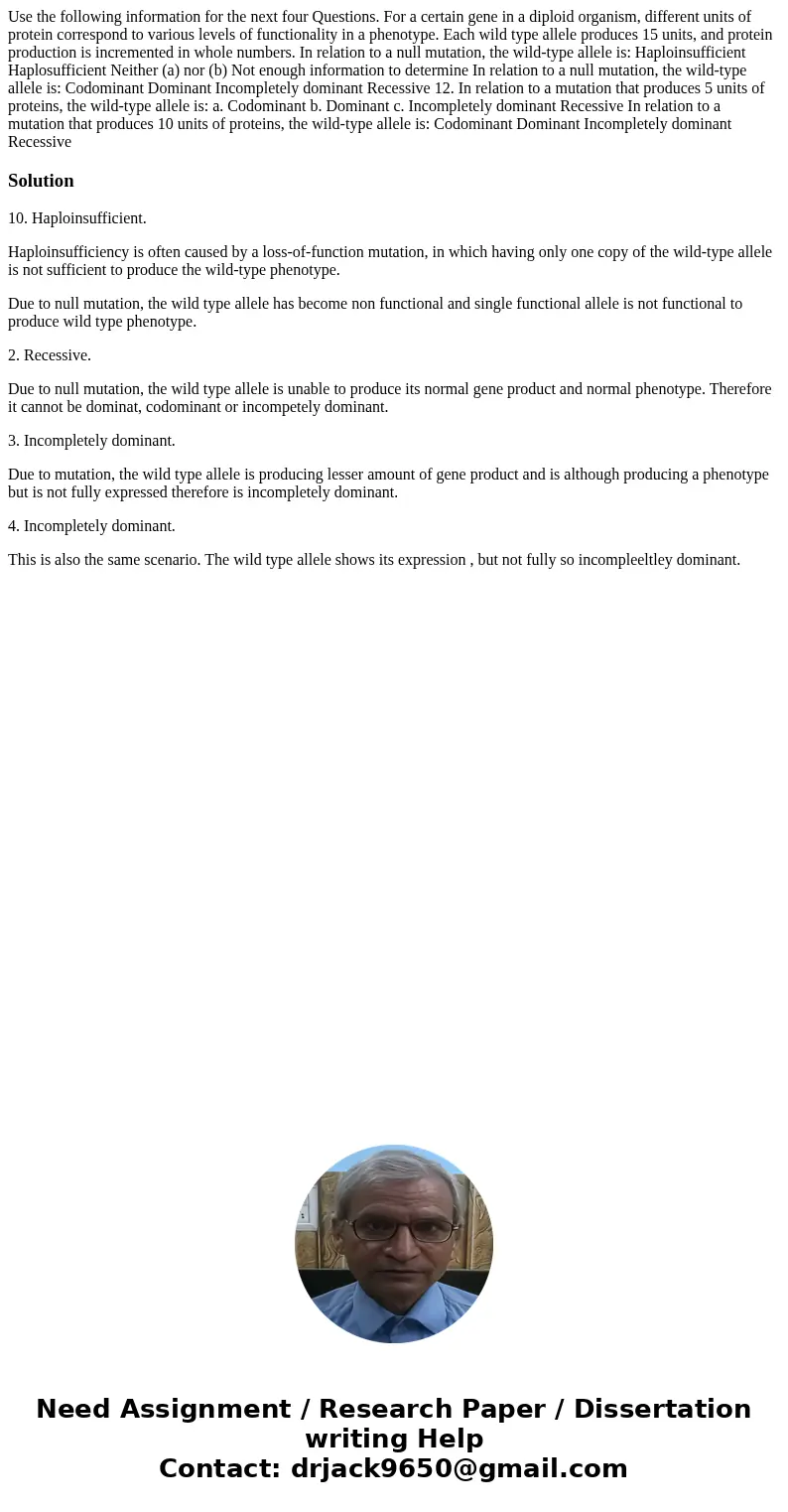Use the following information for the next four Questions Fo
Solution
10. Haploinsufficient.
Haploinsufficiency is often caused by a loss-of-function mutation, in which having only one copy of the wild-type allele is not sufficient to produce the wild-type phenotype.
Due to null mutation, the wild type allele has become non functional and single functional allele is not functional to produce wild type phenotype.
2. Recessive.
Due to null mutation, the wild type allele is unable to produce its normal gene product and normal phenotype. Therefore it cannot be dominat, codominant or incompetely dominant.
3. Incompletely dominant.
Due to mutation, the wild type allele is producing lesser amount of gene product and is although producing a phenotype but is not fully expressed therefore is incompletely dominant.
4. Incompletely dominant.
This is also the same scenario. The wild type allele shows its expression , but not fully so incompleeltley dominant.

 Homework Sourse
Homework Sourse